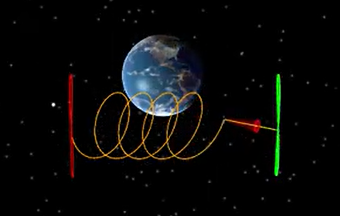
DSTE is a preliminary mission design tool that leverages cutting-edge multibody trajectory design and innovative data visualizations to enable rapid generation and analysis of complex space mission trajectories. DSTE’s visual interactive workflows streamline the trajectory design process, allowing designers to rapidly generate trajectory data and construct cost-effective pathways through sensitive multi-body systems.
Immersive, responsive trajectory exploration
Visualize highly dimensional trajectory data as never before. Identify, correlate, and explore patterns with detailed multidimensional trajectory maps for the cislunar regime and beyond. Periapsis Poincaré maps distill millions of trajectories into two dimensions and bring actionable insights to the surface. DSTE is built for performance with multithreaded parallel processing, serving up insights in an instant.

Multibody dynamics from concept to high-fidelity
DSTE’s multibody dynamics models enable the discovery of trajectories that leverage complex gravitational environments to achieve lower maneuver costs. Whether you’re headed to the cislunar neighborhood of Earth’s moon, exploring Near Earth Objects, or venturing to distant planetary systems, DSTE is ready to streamline your mission design process.
Circular Restricted Three Body Problem (CR3BP)
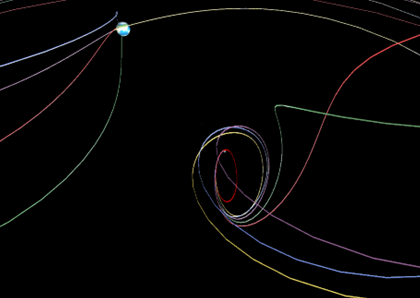
Bicircular Restricted Four Body Problem (BCR4BP)
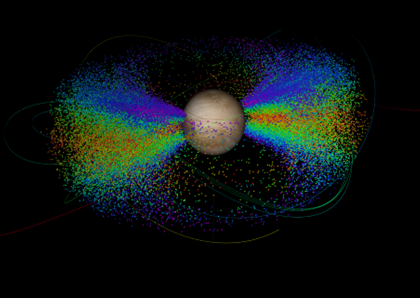

High-Fidelity Ephemeris Model
DSTE connects to FreeFlyer to transition trajectories to the ephemeris model.
Get FreeFlyerVisually Intuitive Trajectory Design
The complicated task of designing spacecraft trajectories and transfers in the presence of multiple gravitational bodies is simplified by DSTE.
Quickly generate orbit families in any planetary system
Lyapunov orbits, Distant Retrograde Orbits (DROs), Near-Rectilinear Halo Orbits (NRHOs), and more

Generate stable and unstable manifolds
Select any unstable periodic orbit and generate its manifolds.
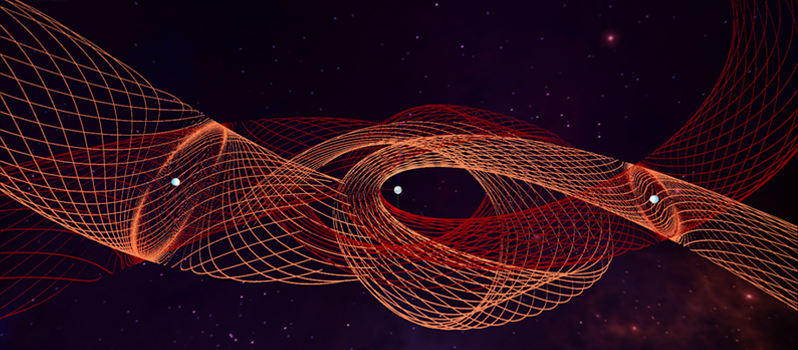
Trajectory fate mapping
Search for patterns and identify zones of behavior including escape, capture, and impact.
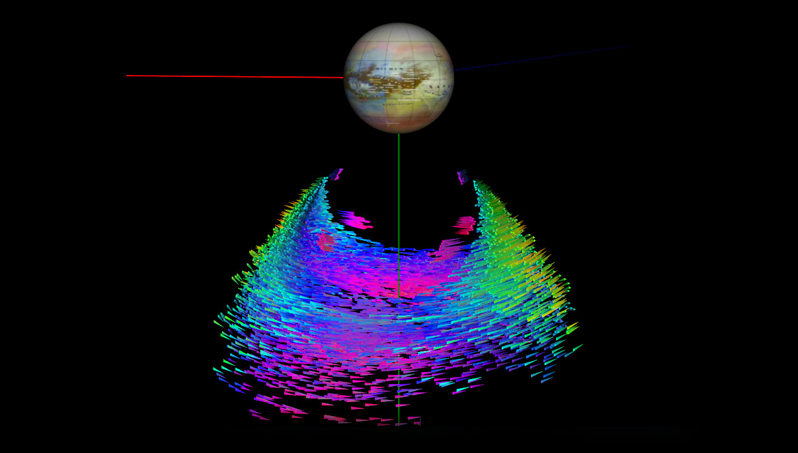
Maneuver trade space analysis
Parameter scan across your maneuver trade space with smart filters to rapidly isolate solutions that suit your mission needs.

Multidimensional data exploration
Analyze your trajectory data set projected into multiple dimensions with four simultaneous correlated views.

Experience next-generation deep space mission design with DSTE
DSTE in print
DSTE is an enabling technology for research supporting the cutting edge missions of tomorrow.
DSTE supports the Lunar Gateway and Artemis programs, including planning for crewed transfers to the Gateway NRHO, providing abort initial guesses for Artemis missions, recontact/impact analysis for the Gateway (ensuring safe cubesat deployment), and end-to-end design of low-energy cargo missions to cislunar libration point orbits. DSTE has also supported Ocean World science orbit studies (planetary systems including Jupiter-Europa, Saturn-Titan, and Saturn-Enceladus).
Wrangling Chaos: Leveraging Flight Dynamics Tools for Cislunar Trajectory Design
Date: October 31, 2023
Cislunar space has been one of the most up and coming topics in our industry. Recent years have brought a lot of activity and attention to the domain. NASA is leading...
Overcomming Observation Obstacles in Cislunar Space for Safe & Successful Exploration
Date: September 1, 2023
Cislunar space is the volume containing the Earth, the Moon, and just beyond the Moon. The region is not rigorously defined; however, it is a regime where...
Navigating the Space Frontier: Addressing the Challenges in SSA with FreeFlyer
Date: August 14, 2023
Space has increasingly become a theater for complex operations, as nations deploy satellites for various purposes. The recent incident involving a...
Stationkeeping, Orbit Determination, and Attitude Control for Spacecraft in Near Rectilinear Halo Orbits
Date: June 19, 2023
From a Near Rectilinear Halo Orbit (NRHO), NASA’s Gateway at the Moon is planned to serve as a proving ground and a staging location for human missions beyond Earth.
Change of Inertia Tensor Due to a Severed Radial Boom for Spinning Spacecraft
Date: March 29, 2023
The spin-stabilized spacecraft is a convenient platform for the measurement of magnetic and electric fields, plasma properties, and other physical phenomena...



